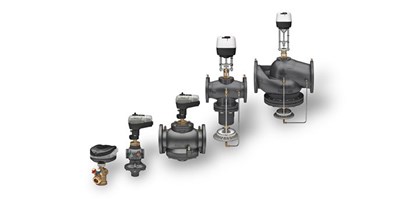Danfoss introduces its new NovoCon® M, L, and XL digital actuators. The new actuators, in conjunction with the AB-QM valves, achieve high-precision dynamic hydronic balancing and control for high flow applications.
Danfoss NovoCon® actuators can be digitally controlled via BACnet or Modbus communication protocols, enabling easy integration, and providing actual system performance data into higher-level building management systems. The I/O interfaces can for example be used to connect sensors to measure supply and return temperatures and calculate energy consumption. The I/O ports are also available for controlling individual devices such as fans or connecting BMS room temperature controllers. This means that all relevant system parameters and control options are always available for centralized HVAC energy management and energy efficiency optimization as part of comprehensive smart building concepts.
Danfoss NovoCon® actuators can be digitally controlled via BACnet or Modbus communication protocols, enabling easy integration, and providing actual system performance data into higher-level building management systems. The I/O interfaces can for example be used to connect sensors to measure supply and return temperatures and calculate energy consumption. The I/O ports are also available for controlling individual devices such as fans or connecting BMS room temperature controllers. This means that all relevant system parameters and control options are always available for centralized HVAC energy management and energy efficiency optimization as part of comprehensive smart building concepts.
The combination of AB-QM and NovoCon® actuators is a good example of the increasing digitalization in HVAC. The combination does not only establish high precision, dynamic, hydronic balancing, and control. The digital actuators provide BMS with real-time HVAC data to enable Active Energy Management (AEM). Digital valve control via Fieldbus also offers advantages in remote commissioning, flow setting, flushing, predictive maintenance, and energy allocation.


